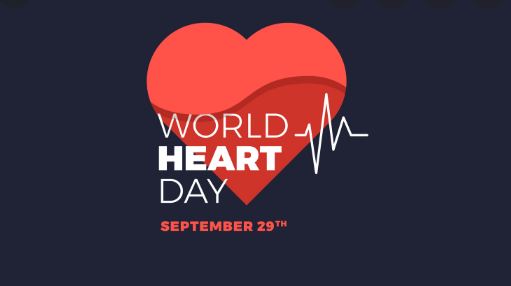HANI ZARBAFT ALI
Periodic observance of World Heart Day held on September 29 is intended to increase public mindfulness of cardiovascular conditions, including their forestallment and their global impact. Cardiovascular conditions are a major trouble prevailing in the world community at a massive scale that have eventually posed serious morbidity and mortality across the globe.
As much as it isanillness of pressing attention, it stems from veritably simple root causes similar as the mundaneness of life, and general physical behaviors. Obesity, diet, cigarette smoking, poor income and sedentary habits are highrisketiologies leading to deterioration of cardiovascular health. The current profitable recession is making it more delicate for the community to cover their health due to lack of coffers and vacuity of primary health care. People in low- and middle- income countries who suffer from CVDs and other noninfectious conditions have lower access to effective and indifferent health care services which respond to their requirements.
As a result, for numerous people in these countries discovery is frequently lateduring the period of disease and people die at an early age from CVDs and other noninfectious conditions, frequently in their most productive times.
The poorest people in low- and middle- income countries are most affected. At the ménage position, substantiation is arising that CVDs and other noninfectious conditions contribute to poverty due to disastrous health spending and high out- of- fund expenditure. At the macro-economic position, CVDs place a heavy burden on the husbandry of low- and middle- income countries.
The WHO has estimated that17.9 million people (about the population of New York)have failed from CVDs in 2019, representing 32 of all global deaths. Of these deaths, most were due to heart attacks and strokes. Over three diggings of CVD deaths take place in low- and middle- income countries. It is imperative to descry cardiovascular complaint as early as possible so that operation with comforting and drugs can begin. There are also several underpinning determinants of CVDs. These reflect the major forces driving social, profitable, and artistic change – globalization, urbanization, and population ageing. Other determinants of CVDs include poverty, stress, and heritable factors.
Cessation of smoking, reduction of salt in the diet, eating further fruit and vegetables, regular physical exertion and avoiding dangerous use of alcohol have been shown to reduce cardiovascular associated morbidity. Health programs that produce conducive surroundings for making healthy choices affordable and available are essential for motivating people to borrow and sustain healthy behaviors.
Common symptoms of cardiovascular diseases
Often, there are no symptoms of the underlying disease of the blood vessels at an early stage. A heart attack or stroke may be the first alarming sign of abnormal functioning. Symptoms of a heart attack include
· Pain or discomfort in the center of the chest; and/or
· Pain or discomfort in the arms, the left shoulder, elbows, jaw, or back.
In addition, the person may witness difficulty in breathing or shortness of breath; nausea or vomiting; light-headedness or feebleness; a cold sweat; and turning pale. Women are more likely than men to experience shortness of breath, nausea, vomiting, and back or jaw pain.
The most common symptom of a stroke is unforeseen weakness of the face, arm, or leg, most frequently on one side of the body. Other symptoms include unforeseen onset of
· Impassiveness of the face, arm, or leg, especially on one side of the body;
· Confusion, difficulty speaking or understanding speech;
· Difficulty seeing with one or both eyes;
· Difficulty walking, dizziness and/ or loss of balance or collaboration;
· Severe headache with no given cause; and/ or
· Fainting or unconsciousness.
People passing these symptoms should seek medical care incontinently.
The key to cardiovascular complaint reduction lies in the addition of cardiovascular complaint operation interventions in universal health content packages, although in a high number of countries health systems bear significant investment and reorientation to effectively manage CVDs.
Substantiation from 18 countries has shown that hypertension programs can be enforced efficiently and bring effectiveness at the primary care position which will eventually mitigatethe probability of coronary heart disease and stroke. Cases with cardiovascular complaint should have access to applicable technology and drug.
Nonetheless, a healthy, balanced diet is recommended for a healthy heart. Grown- ups are advised to do at least 150 minutes (about 2 and a half hours) of moderate exertion a week, similar as cycling or brisk walking for 40 minutes, as for most of us the age-old adage “Your Greatest wealth is your health” stands true.
Healthy physical activity is a hack to life. In short, be healthy, prioritize life, live strong and before it is too late, go and take advice!
With a healthy heart. The beat goes on.
The author is a 4th Year MBBS student, an aspiring researcher, her field of interests revolvearound cardiovascular diseasesand public health.











